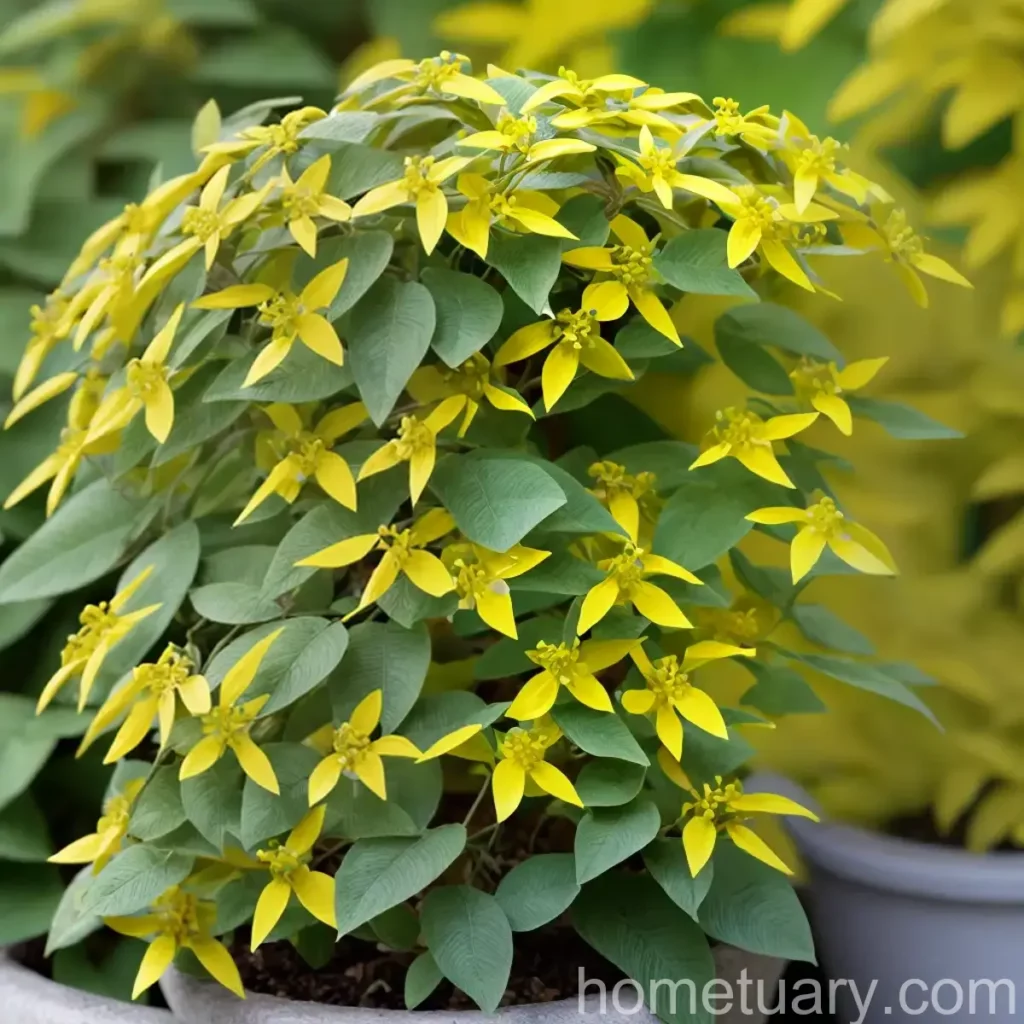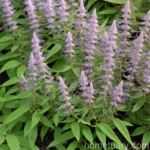Shrub Lespedeza (Lespedeza bicolor): A Comprehensive Guide
Shrub Lespedeza, scientifically known as Lespedeza bicolor, is a highly valued plant that offers an array of benefits in landscaping, gardening, and conservation. This plant has been gaining popularity due to its adaptability and its ability to thrive in various conditions. As a plant scientist, I am excited to take you through the intricate details of the Shrub Lespedeza, including its cultivation, maintenance, and the unique features that set it apart.
What is Shrub Lespedeza (Lespedeza bicolor)?
Shrub Lespedeza, also known by its scientific name Lespedeza bicolor, is a deciduous shrub native to Japan. With its exceptional ornamental value and adaptability, Shrub Lespedeza has become an increasingly sought-after plant for landscaping, soil erosion control, wildlife habitat enhancement, and pollinator conservation. This species belongs to the Fabaceae family and is characterized by its small, pea-like flowers and lush foliage.
Key Takeaways – Shrub Lespedeza (Lespedeza bicolor)
Before diving into the specifics of Shrub Lespedeza, let’s take a look at the key takeaways that we’ll be exploring in this comprehensive guide:
- Cultivation and Growth Requirements: Understanding the optimal conditions for growing Shrub Lespedeza.
- Uses: Exploring the diverse uses of Shrub Lespedeza in landscaping, gardening, and conservation efforts.
- Water Requirements: Discussing the water needs of Shrub Lespedeza and how to maintain optimal soil moisture.
- Sunlight: Understanding the sunlight preferences of Shrub Lespedeza and its shade tolerance.
- Fertilization: Exploring the essential fertilization techniques for promoting healthy growth.
- Soil Preferences: Discussing the ideal soil conditions for cultivating Shrub Lespedeza.
- Pruning: Learning about the pruning techniques to maintain the shape and vigor of Shrub Lespedeza.
- Propagation: Exploring the various methods of propagating Shrub Lespedeza to expand its presence in a garden or landscape.
- Container Popularity: Understanding the potential for growing Shrub Lespedeza in containers.
- Common Diseases and Pests: Identifying and managing common diseases and pests that affect Shrub Lespedeza.
- Botanist’s Tips: Gaining insights and tips from botanists on growing and caring for Shrub Lespedeza.
- Fun Facts: Discovering interesting and lesser-known facts about Shrub Lespedeza.
- Links to External Resources: Providing additional resources for further exploration of Shrub Lespedeza.
Cultivation and Growth Requirements
Shrub Lespedeza, with its adaptability and resilience, is known for its ease of cultivation. Understanding the optimal growth requirements is essential for providing the best environment for Shrub Lespedeza to thrive.
Water
- Water Needs: Shrub Lespedeza thrives in well-drained soil and prefers regular moisture. However, it is important to avoid waterlogging, especially in poorly draining soil.
- Irrigation: During the establishment phase, providing regular irrigation is crucial to promote healthy root development. Once established, Shrub Lespedeza displays moderate drought tolerance, but consistent moisture is beneficial for robust growth and flowering.
- Mulching: Applying a layer of organic mulch around the base of the shrub helps to retain soil moisture and regulate soil temperature, contributing to overall plant health.
Sunlight
- Sun Requirements: Shrub Lespedeza thrives in full sun to partial shade. It is essential to provide at least 6-8 hours of sunlight for optimal growth and flowering. In hotter climates, providing some protection from intense afternoon sun can be beneficial.
Fertilizer
- Fertilization: Shrub Lespedeza benefits from a balanced, slow-release fertilizer application in early spring. A general-purpose fertilizer with a balanced NPK ratio can support healthy growth and abundant flowering. It is essential to follow the recommended dosage and application guidelines to prevent over-fertilization.
Soil
- Soil Preferences: Shrub Lespedeza thrives in well-drained, slightly acidic to neutral soil. It adapts to various soil types, including loamy, sandy, or clay soils, as long as they provide adequate drainage. Conducting a soil test can provide valuable insights into the pH and nutrient levels, helping to tailor amendments for optimal growth.
Pruning
Proper pruning is essential for maintaining the shape, vigor, and flowering potential of Shrub Lespedeza. Regular pruning can also help in removing dead or diseased wood and promoting airflow within the shrub.
- Pruning Technique: Shrub Lespedeza is typically pruned in late winter or early spring before the onset of new growth. This allows for rejuvenation and shaping of the shrub. It is important to remove damaged or crossing branches, and to encourage outward growth by selectively pruning to maintain a balanced and open structure.
Propagation
Expanding the presence of Shrub Lespedeza in a garden or landscape can be achieved through various propagation methods. Understanding these techniques can enable enthusiasts and horticulturists to propagate this valuable shrub effectively.
- Seed Propagation: Shrub Lespedeza can be propagated from seeds, which are typically sown in a well-prepared seedbed or containers. The seeds require scarification or stratification to break dormancy and promote germination.
- Softwood Cuttings: Propagation from softwood cuttings can be effective, especially during the active growing season. Selecting healthy, non-flowering shoots and providing appropriate moisture and humidity can enhance the success rate of softwood cuttings.
Container Popularity
The adaptability and ornamental value of Shrub Lespedeza make it an excellent candidate for container gardening. Within containers, this shrub can thrive and contribute to the visual appeal of patios, decks, and other outdoor spaces.
- Container Selection: When choosing a container for Shrub Lespedeza, it is important to select a sizeable, well-drained container to accommodate the root system and promote healthy growth.
- Soil Mix: Using a high-quality, well-draining potting mix is essential for container cultivation. This provides the necessary aeration and moisture retention for the shrub’s root system.
- Watering: Containers require more frequent watering, especially during warm and dry periods. It is important to monitor soil moisture and provide consistent, even watering to prevent drought stress.
Common Diseases and Pests
While Shrub Lespedeza is relatively resistant to many pests and diseases, it is essential to be aware of potential issues that can impact the health of the plant. Recognizing these challenges and implementing appropriate management strategies is crucial for maintaining the vigor of Shrub Lespedeza.
Disease Diagnosis
- Powdery Mildew: Shrub Lespedeza can be susceptible to powdery mildew, especially in humid conditions. This fungal disease manifests as a powdery, white growth on the leaves, affecting the overall aesthetics of the plant.
- Preventive Measures: Ensuring proper air circulation, avoiding overhead watering, and promptly removing and disposing of affected plant material can help in reducing the incidence of powdery mildew.
Common Pests
- Aphids: Aphids can occasionally affect the new growth of Shrub Lespedeza, causing distortion and stunted growth.
- Integrated Pest Management (IPM): Encouraging natural predators of aphids, such as ladybugs or lacewings, can help in maintaining a balanced ecosystem. If necessary, targeted applications of insecticidal soap can effectively control aphid populations without harming beneficial insects.
Botanist’s Tips
To enrich our understanding of Shrub Lespedeza and gain insights from experienced botanists, let’s delve into some tips that can enhance the cultivation and care of this valuable shrub.
- Wildlife Habitat: Shrub Lespedeza is a valuable plant for supporting wildlife, including pollinators and beneficial insects. When strategically incorporated into landscapes, it can contribute to the overall biodiversity and ecological balance.
- Seasonal Care: Observing the seasonal growth patterns and requirements of Shrub Lespedeza is essential for providing targeted care. From spring pruning to autumn planting, understanding these seasonal nuances can promote the vigor and resilience of the shrub.
Fun Facts
As we explore the fascinating world of Shrub Lespedeza, let’s uncover some captivating and lesser-known facts about this remarkable plant.
- Wildlife Benefits: Shrub Lespedeza serves as a food source for a variety of wildlife, including quail, turkey, and deer. It provides valuable forage and contributes to the natural ecological balance.
- Erosion Control: In addition to its ornamental and ecological benefits, Shrub Lespedeza is also highly valued for its role in erosion control, especially on slopes and disturbed landscapes.
Links to External Resources
For those eager to delve deeper into the world of Shrub Lespedeza, I have curated a selection of valuable resources that offer in-depth information, practical guidance, and captivating insights:
- University of Missouri Extension – Planting and Care of Shrubs
- USDA Plants Database – Lespedeza bicolor Information
- The Morton Arboretum – Selecting Plants for Pollinators
- AmericanHort – Container Gardening Essentials
- Integrated Pest Management for Home Gardeners
By exploring these resources, enthusiasts, horticulturists, and conservationists can gain a holistic understanding of Shrub Lespedeza and its diverse applications within various landscapes and ecosystems.
In conclusion, the Shrub Lespedeza (Lespedeza bicolor) stands as a testament to the remarkable adaptability and ecological significance of plants within our landscapes. With its ornamental charm, wildlife benefits, and contributions to erosion control, this shrub holds a prominent place in the realm of landscaping, gardening, and conservation. By embracing the nuances of its cultivation, understanding its ecological role, and appreciating its inherent beauty, we can unlock the full potential of the Shrub Lespedeza in creating vibrant, sustainable landscapes.
As we continue to explore and appreciate the intricate world of plants and their profound impact on our environment, the Shrub Lespedeza exemplifies the essence of resilience, versatility, and natural beauty, enriching our lives and landscapes in myriad ways.
Whether it’s the captivating allure of its blooming period or the practical considerations of its care and propagation, Shrub Lespedeza stands as a testament to the enduring allure and ecological significance of plants in our lives.
As a plant scientist, I have meticulously curated this comprehensive guide to Shrub Lespedeza (Lespedeza bicolor), encompassing its cultivation, uses, maintenance, and ecological contributions, providing a valuable resource for enthusiasts, horticulturists, and conservationists.















